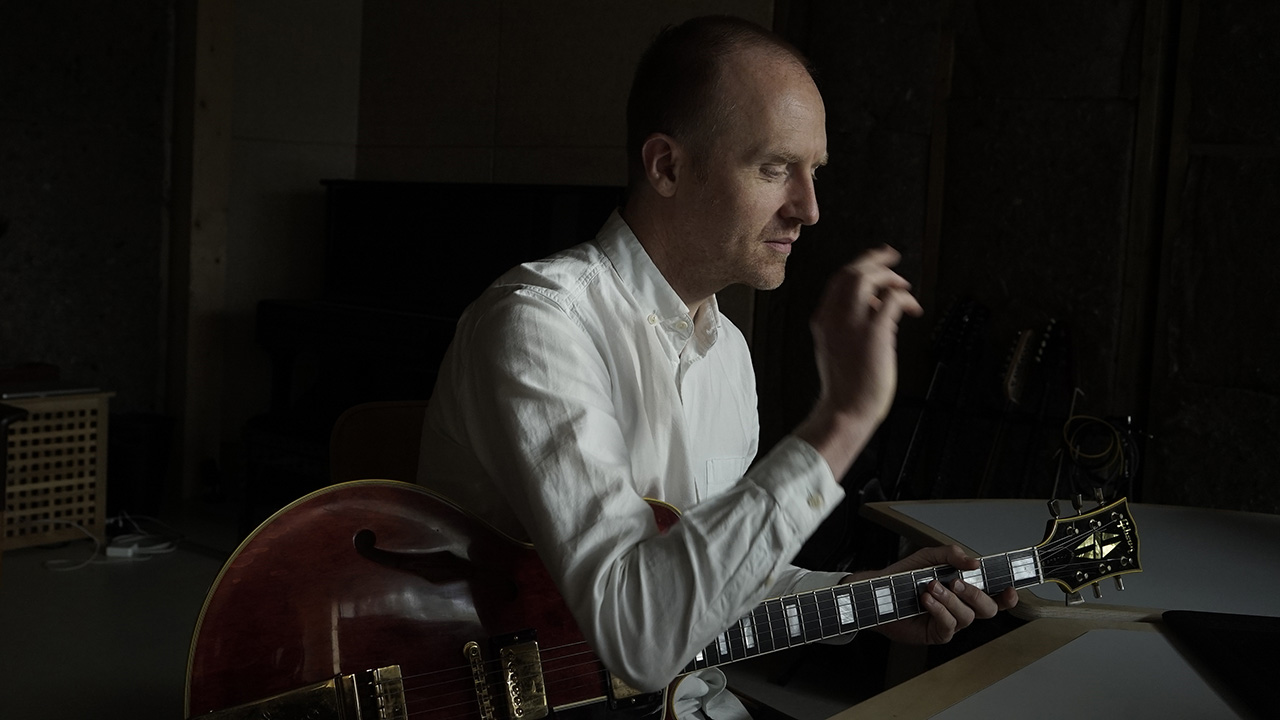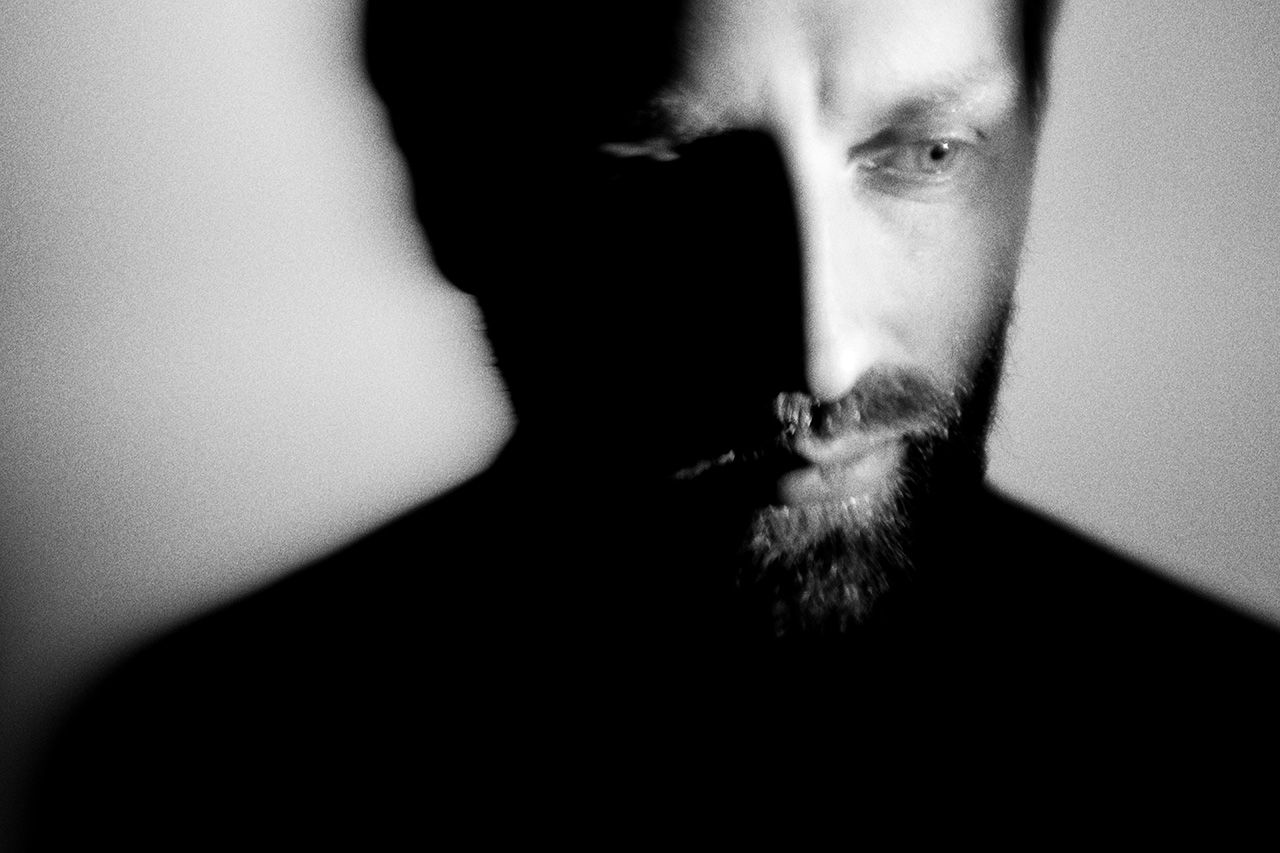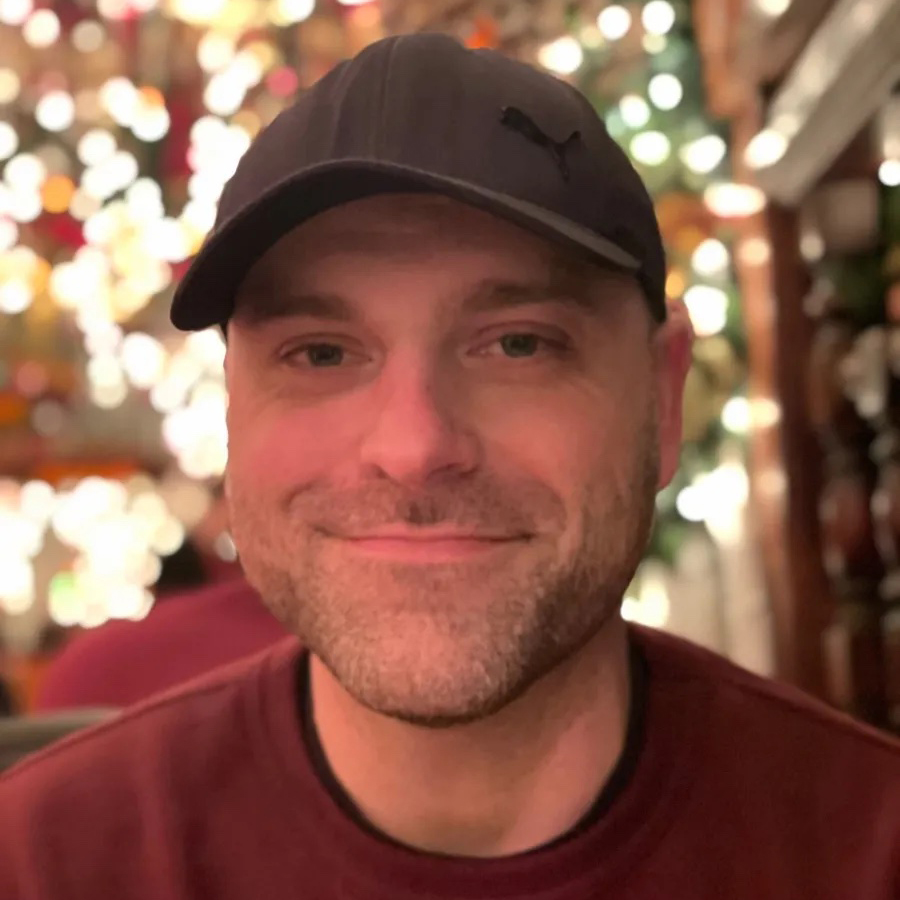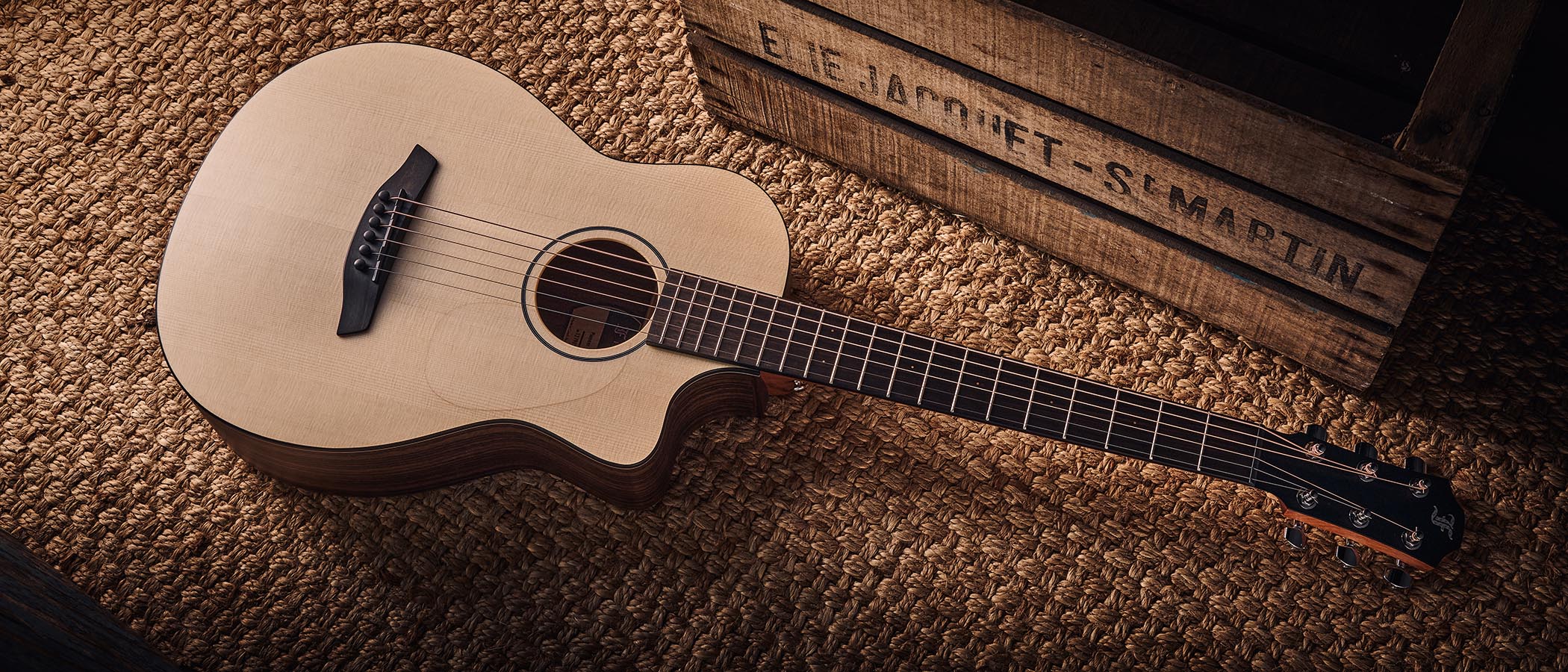“He’d already set everything up... The guitar was radically out of tune and the strings were virtually hanging off it”: Leo Abrahams on his Strat-wrestling initiation with Brian Eno, why he didn’t want to be famous, and what he learned from Paul Simon
The guitarist/producer has worked with Brett Anderson, Jarvis Cocker and Imogen Heap among others, but here he explains why his younger self might be slightly disappointed in his playing

A close working relationship with Brian Eno, along with appearances on records by Suede’s Brett Anderson, Pulp’s Jarvis Cocker, Regina Spektor and others, keeps Leo Abrahams’ mind open. “My influences are really varied,” he tells Guitar World. “But the one constant has been searching for unusual sounds.”
He continues: “One very important thing on a session is the ability to get the right sound pretty much immediately, and for that sound to be convincing. You have to know your gear really well.”
He’s released six full-length solo albums and five EPs of his own – but they’re not his primary focus. “It’s an important part of my work, but I never wanted to be an ‘artist’ in the sense of someone who needs to promote themselves and make a living from it.
“I only do solo work when I feel inspired and have the time. I’m fortunate to have an outlet for creativity with the artists I play for and produce. The itch to make something of my own isn’t always there.”
What initially got you hooked on guitar?
“I was obsessed with music from the age of two, but what got me into guitar specifically was seeing Nik Kershaw on TV when I was seven. I didn’t want to be famous – I just wanted to play. As for what’s kept me there, I’ve honestly never thought about it!”
Was there a point where you felt like you’d found your sound?
All the latest guitar news, interviews, lessons, reviews, deals and more, direct to your inbox!
“My first professional audition was with Imogen Heap, and when I got her demos there was hardly any guitar on them. Rather than add anything, I decided to try to mimic the synth and percussion parts – and that probably got me the job.”
What led to Imogen, and was in your toolbox when you started?
“Imogen had the same manager as Nik, and he remembered me from the dreadful demos I used to send him as a teenager; that’s how I got the audition! My main effects unit was a Zoom 8080. I’d love to be able to try one again now. I also had a Boss PS-3 digital pitch shifter/delay, which I still own and use.”
Brian Eno once said about you: “I spotted him trying out a guitar – the first I’ve ever seen in a guitar shop who wasn’t playing Stairway to Heaven; so I thought he must be good.”
“There used to be a second-hand instrument store in Notting Hill Gate, which I would frequent in the late 90s. I was testing the intonation on a guitar one day, and Brian walked in. I’d been listening to his music the night before – I remember thinking, ‘Don’t panic, just keep doing what you’re doing; maybe he’ll come over.’ Sure enough, he did!”
What was it like tracking with Eno for Drawn from Life?
“That was the first session he called me for. I’d been stressing about what to bring, but when I arrived he’d already set everything up – a nice-looking Strat going into an EHX POG. The guitar was radically out of tune and the strings were virtually hanging off it.

“Assuming it was some kind of test – or oblique strategy! – I asked him to start the track and did my best to play. He seemed happy enough with it, and when he loaded up the second track, I meekly asked if I could play my own guitar. He said, ‘Yes, of course. I didn’t expect you to play that thing; I was just using it to test the line!’”
Your Eno connection led you to work with Paul Simon on 2006’s Surprise.
“I was still pretty young and I’d grown up with Paul’s music. It was one of the few times in my career that I’ve felt intimidated, even though [he's] so kind. One of the songs he taught me had a gorgeous cross-string figure, although it didn’t make it onto the album, I never forgot it, and I used to play it to myself quite often.
Brian has the wonderful ability to create an environment in which musicians feel happy, focused and free to experiment
“In 2016, when I was working with Regina Spektor, I tuned in to the first episode of Louis CK’s Horace and Pete, and Paul had used the figure as the theme. It really moved me that he’d been turning it over in his mind all that time – and so had I!”
Your connection seemed to deepen with Eno on Small Craft on a Milk Sea and Everything That Happens Will Happen Today.
“Yes – he asked me to step into more of a co-producer role for that. The previous year, I’d helped him put together a record of improvisations featuring Herbie Hancock, Squarepusher, Jon Hopkins and Seb Rochford. It was an incredible lineup, but sadly the album never came out. I really enjoyed the process, and it opened a new area of collaboration with Brian.”
What can you say about working with Eno on the soundtrack for The Lovely Bones?
Brian has the wonderful ability to create an environment in which musicians feel happy, focused and free to experiment. It’s a kind of play, but serious play.
“Brian didn’t have much interest in writing cues in a conventional sense, so the vast majority of the pieces were guided improvisations that were edited to picture in New Zealand.
“One day he was frustrated that we weren’t coming up with the right kind of mood for a scene – everything was sounding generic. He suggested that Jon and I go for lunch. When we got back he’d written 10 pieces, all hitting the brief he’d given himself. He has a reputation for making generative music, but on top of that he’s a really impressive composer.”
What’s your greatest takeaway from working with Eno?
“He has the wonderful ability to create an environment in which musicians feel happy, focused and free to experiment. It’s a kind of play, but serious play. I’ve never felt that he expected anything exactly.
“But you naturally want to engage – to commit emotionally and intellectually, and rise to the extraordinary opportunities for beauty and joy that he offers. I think it would be difficult to work with him if you were inflexible or incurious.”
What’s the state of your rig these days? As a session player, is it easy to get caught up in gear FOMO?
“All too easy! But I must say that as DSP has become more common in pedals, I’ve increasingly lost interest. I have Ableton and I build audio racks to play through, using lots of parallel processing and an external MIDI controller. My record Scene Memory II consists of solo guitar improvisations through that setup.
“Compared to what’s possible with the software, pedals can feel quite limited, and I have neither the patience nor the capacity to menu-dive. My preferred setup is the laptop with an amp, which I run analog pedals into so I can have the best of both worlds.”
I wish I had more time to do proper practice… years-ago me might be disappointed that today me isn’t much better than him!
If you told the player you were years ago that you’d be the player you are today, what might he have thought?
“I think mostly he’d have been pleased and grateful that today me is lucky enough to still be doing it. I very much enjoy playing guitar for people – it’s a sensual, spiritual, and intellectual pleasure.
“I do wish I had more time to do proper practice, as there are just so many aspects of my playing that I’d like to improve. So, years-ago me might be disappointed that today me isn’t that much better than him!”

How do you hope to expand upon your playing?
I’ve been thinking for a few years about ways to incorporate the composer Morton Feldman’s ideas about harmony and duration into improvisation
“I just hope I can continue doing this job and that there’s enough work for me and my friends. The industry has shrunk a lot since I started. I’ve been lucky not to have had to compromise much in terms of the music I work on, and I don’t think I’d be able to now.
“I’ve been thinking for a few years about ways to incorporate the composer Morton Feldman’s ideas about harmony and duration into improvisation. My release, Krononaut II, is the early fruit of that exploration; but it feels like something I could spend the rest of my life investigating.
“I’d love to improve my melodic and chordal improvising, my technique… it’s endless! That’s part of what keeps it interesting.”
- Find out more on Leo’s London studio space, The Shelter.
Andrew Daly is an iced-coffee-addicted, oddball Telecaster-playing, alfredo pasta-loving journalist from Long Island, NY, who, in addition to being a contributing writer for Guitar World, scribes for Bass Player, Guitar Player, Guitarist, and MusicRadar. Andrew has interviewed favorites like Ace Frehley, Johnny Marr, Vito Bratta, Bruce Kulick, Joe Perry, Brad Whitford, Tom Morello, Rich Robinson, and Paul Stanley, while his all-time favorite (rhythm player), Keith Richards, continues to elude him.
You must confirm your public display name before commenting
Please logout and then login again, you will then be prompted to enter your display name.



